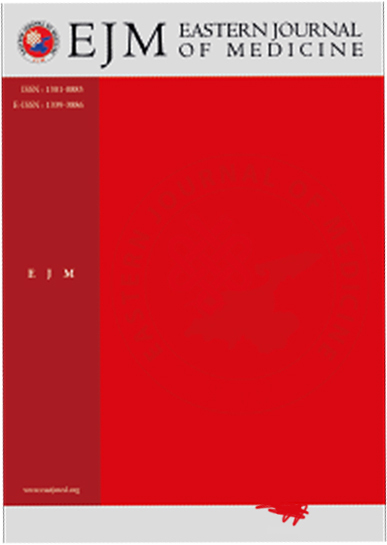Enterococcus species isolated from patients diagnosed with COVID-19 and comparisons of their antibacterial susceptibility with one-year period before the pandemic
Pınar Öner1, Fatih Öner2, Özlem Aytaç1, Feray Ferda Şenol1, Nuray Arı3, Hatice Çağlar4, Zülal Aşçı Toraman51DEPARTMENT OF MICROBIOLOGY, FETHI SEKIN CITY HOSPITAL, ELAZIG, TURKEY.2DEPARTMENT OF ANESTHESIOLOGY AND REANIMATION, FETHI SEKIN CITY HOSPITAL, ELAZIG, TURKEY.
3DEPARTMENT OF MICROBIOLOGY, SULTANBEYLI CITY HOSPITAL, ISTANBUL, TURKEY.
4DEPARTMENT OF MICROBIOLOGY,BILKENT CITY HOSPITAL, ANKARA, TURKEY.
5FIRAT UNIVERSITY MICROBIOLOGY DEPARTMENT, ELAZIG,TURKEY
INTRODUCTION: In our study, the enterococci species isolated before the pandemic(BP)and the enterococci isolated fromCOVID-19 patients during the pandemic period(DP) and antibiotic susceptibility results were retrospectively analyzed.In these two periods,it was aimed to investigate the effects of antibiotics preferred for treatment on susceptibility status.
METHODS: The isolation and antibiotic susceptibilities of enterococci were defined by conventional methods and an automatized system(VITEK2).The antibiotic susceptibilities have been evaluated according toEUCAST.The amount of antibiotic use in our hospital during these periods was obtained from pharmacy data.
RESULTS: For the BPperiod221(7%) enterococci strains were included, and for the DP period, 146(5.9%) enterococcus species that have been isolated only from COVID-19 patients have been included in the study. In both periods, the most frequently isolated enterococcus species is E.faecalis.In DP, the susceptibilities for ampicillin, ciprofloxacin, linezolid, high-level streptomycin(HLS), teicoplanin, and vancomycin have increased when compared to BP.High-level gentamycin(HLG) and tigecycline susceptibilities have decreased in DP when compared to BP.
DISCUSSION AND CONCLUSION: It was observed that the increase in antibiotic use was reflected in the susceptibility rates. In theDP period,it was observed that ampicillin,vancomycin,teicoplanin, and ciprofloxacin were consumed less for the treatment,and accordingly, there was an increase in the sensitivity of these antibiotics. It was determined that the increase inthe consumption of aminoglycoside,tetracycline,and tigecycline caused to decrease in the susceptibility of gentamicin and tigecycline. It was concluded that strategies for rational antibiotic prescribing to COVID-19patients should be considered in order to prevent the negative effects of inappropriate antibiotic use from reaching levels that cannot be compensated for after the ongoing pandemic.
Manuscript Language: English














